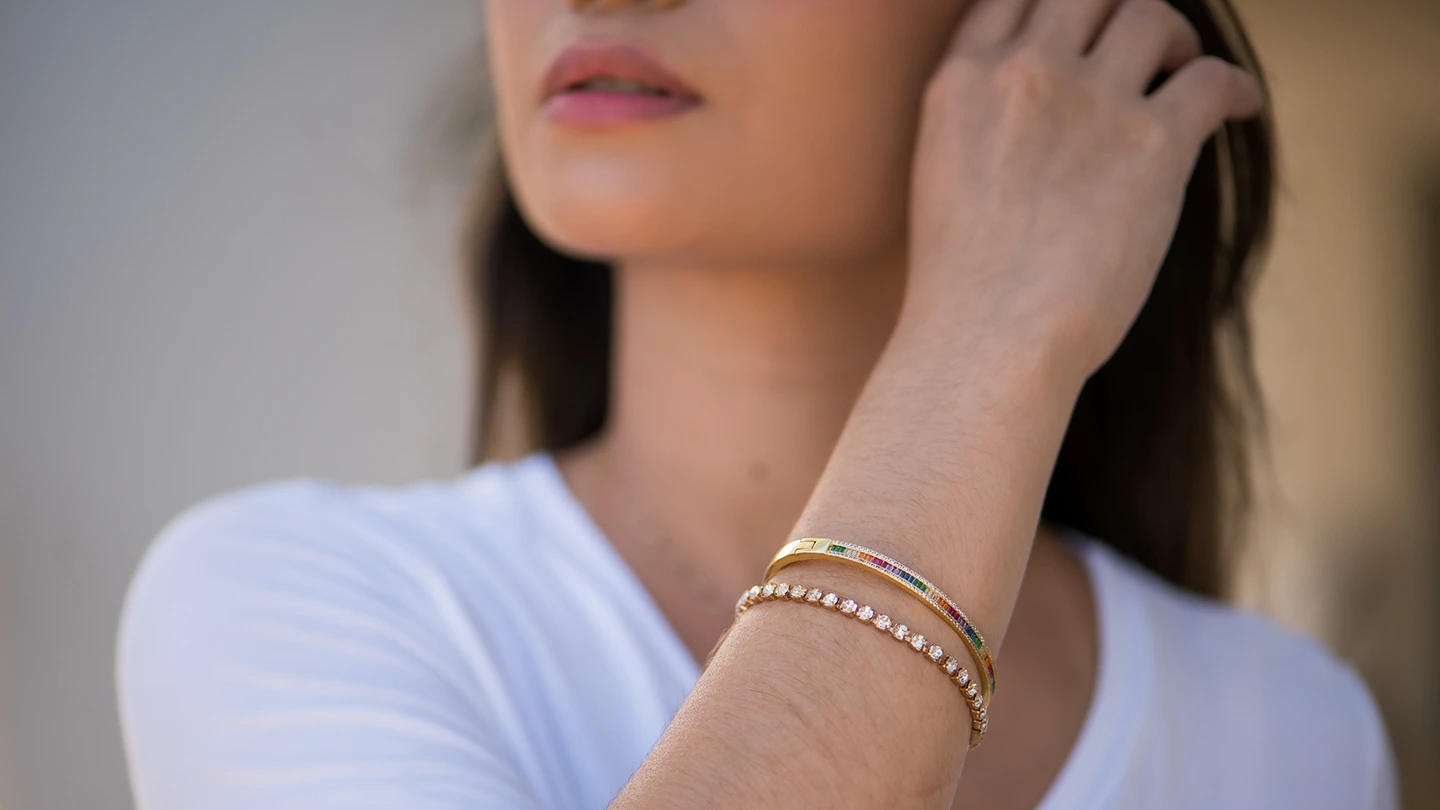Tennis bracelets blend the brilliance of diamonds or gemstones with a design that is both elegant and practical. Defined by a continuous line of individually set stones, they are cherished for their simplicity, versatility and timeless appeal—effortlessly transitioning from everyday wear to formal occasions.
In this guide, we’ll dive into the history and evolution of the tennis bracelet, and explore key design elements. From stone shape and setting to metal type and proper fit, we’ll offer tips to help you discover a bracelet that’s not only beautiful, but also a true reflection of your taste and style.
What are Tennis Bracelets?
A tennis bracelet is an elegant, flexible band featuring a continuous line of individually set diamonds or gemstones that encircle the wrist in a seamless design. Often described as a “river of diamonds,” this style is celebrated for its ability to capture and reflect light beautifully.
Tennis bracelets come in a range of widths—from slim, delicate strands to bold, statement-making bands—making them versatile enough for both understated elegance and eye-catching glamour. Traditionally crafted in precious metals like gold or platinum, they include secure clasps (often with safety latches) to ensure durability and peace of mind during daily wear.
Why is it Called a Tennis Bracelet?
The name “tennis bracelet” was popularized in the 1980s when tennis star Chris Evert famously lost her diamond bracelet during a match at the U.S. Open and she requested a pause in play to search for it. This incident not only gave the bracelet its name but also sparked a surge in its popularity. Since then, tennis bracelets have evolved from a sporty luxury item to a staple accessory in formal and casual jewelry collections, frequently spotted on celebrities and public figures.
Popular Diamond Tennis Bracelet Styles
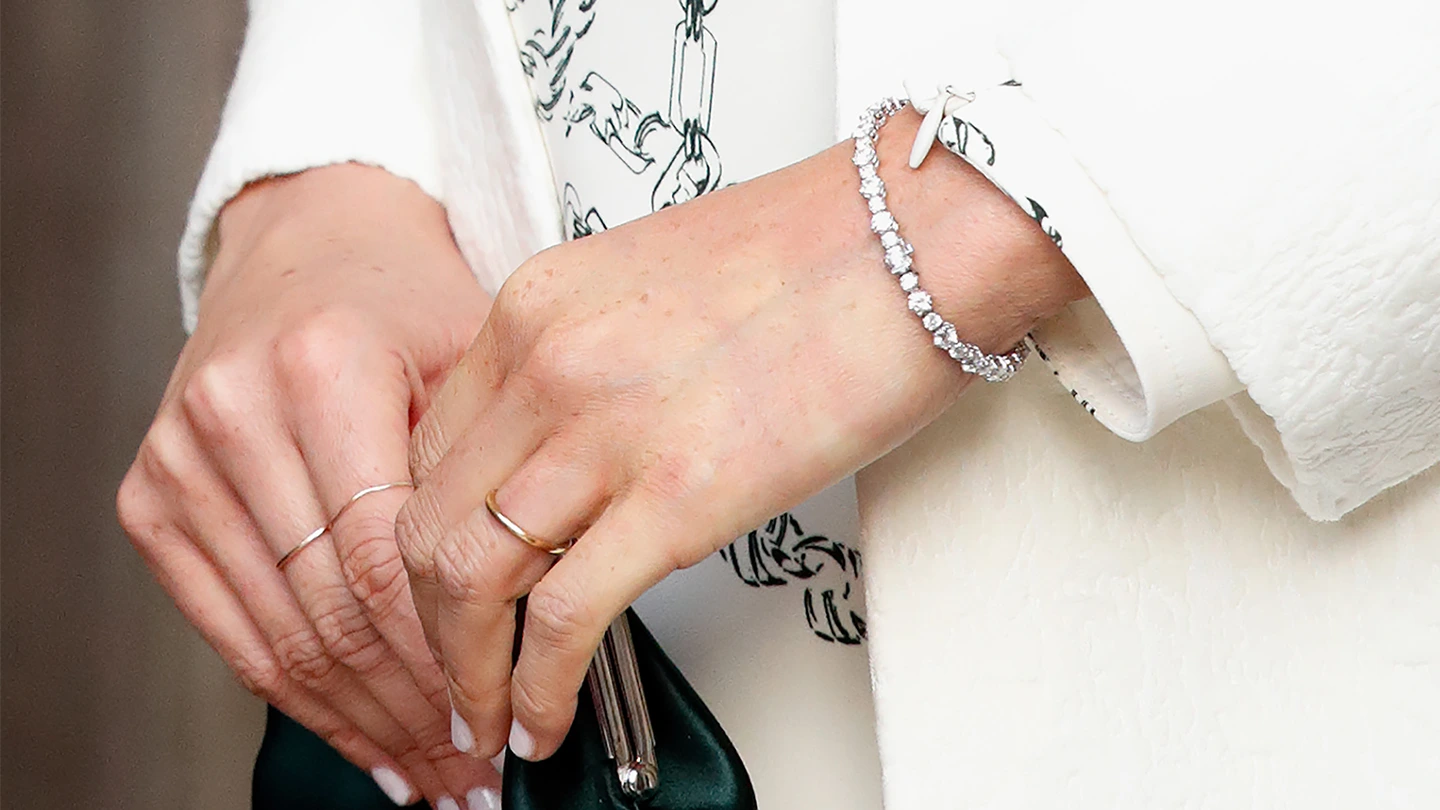
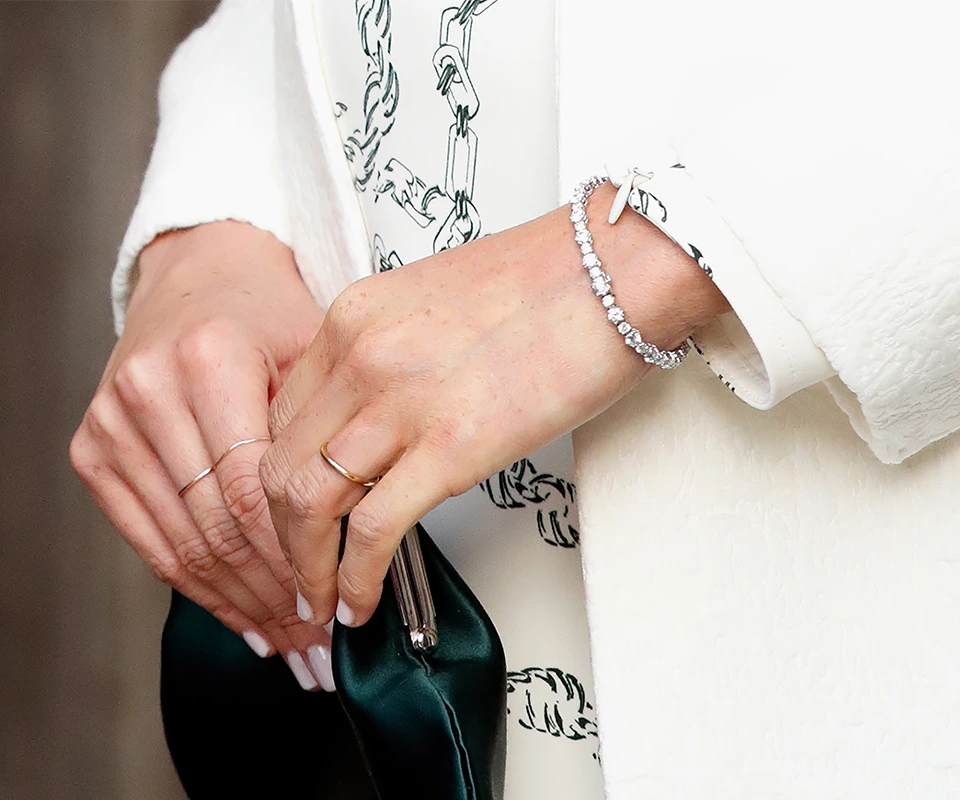
Tennis bracelets come in a wide variety of settings, gemstones, gemstone cuts and metals—each element contributing to the bracelet’s distinctive style and appeal. Here’s a comprehensive guide to help you understand the different options and choose the perfect one for you:
Stone Settings
Setting refers to how gems are mounted and secured in a piece of jewelry. The type of setting affects the bracelet’s overall aesthetics, durability and how it interacts with light. Here are the most common setting types used in tennis bracelets:
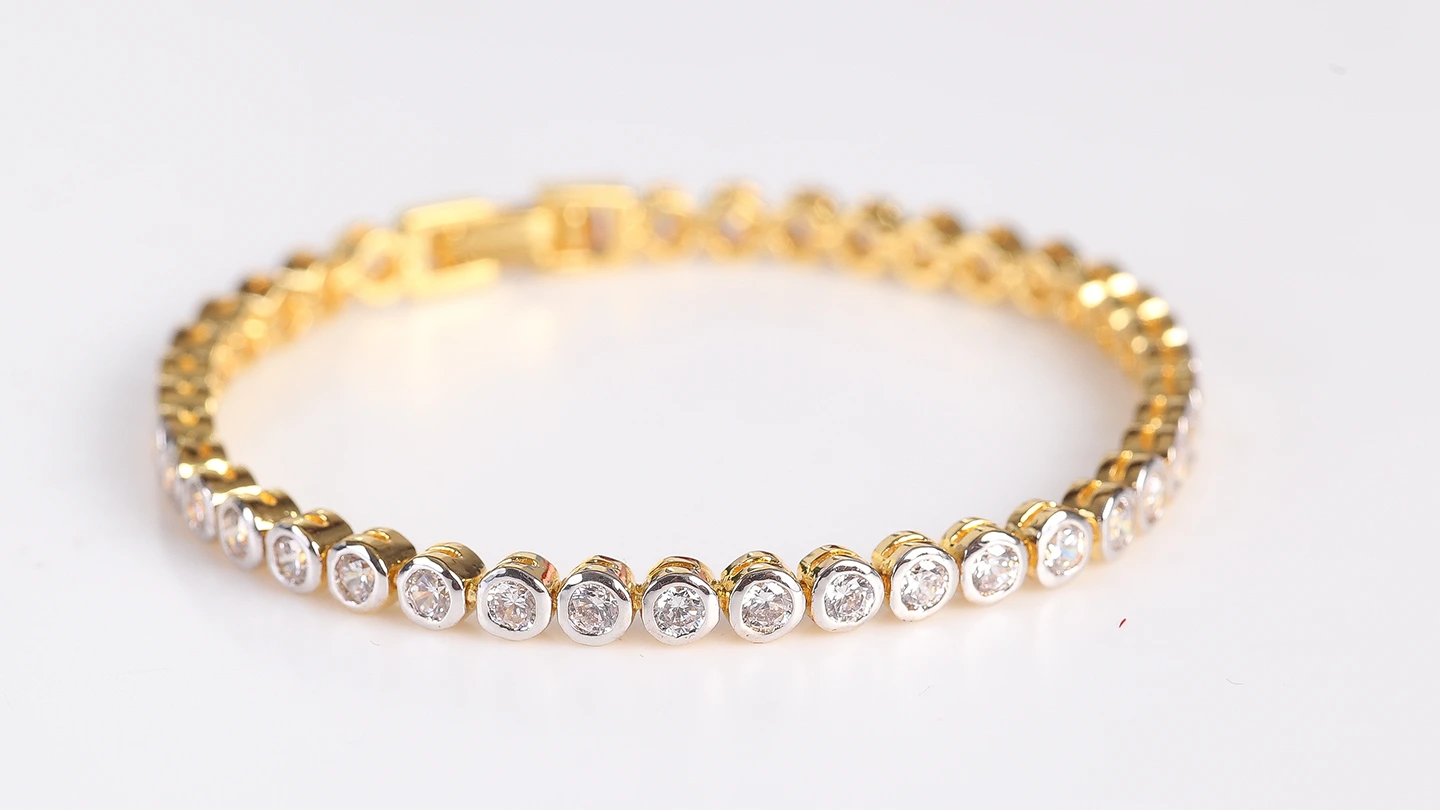
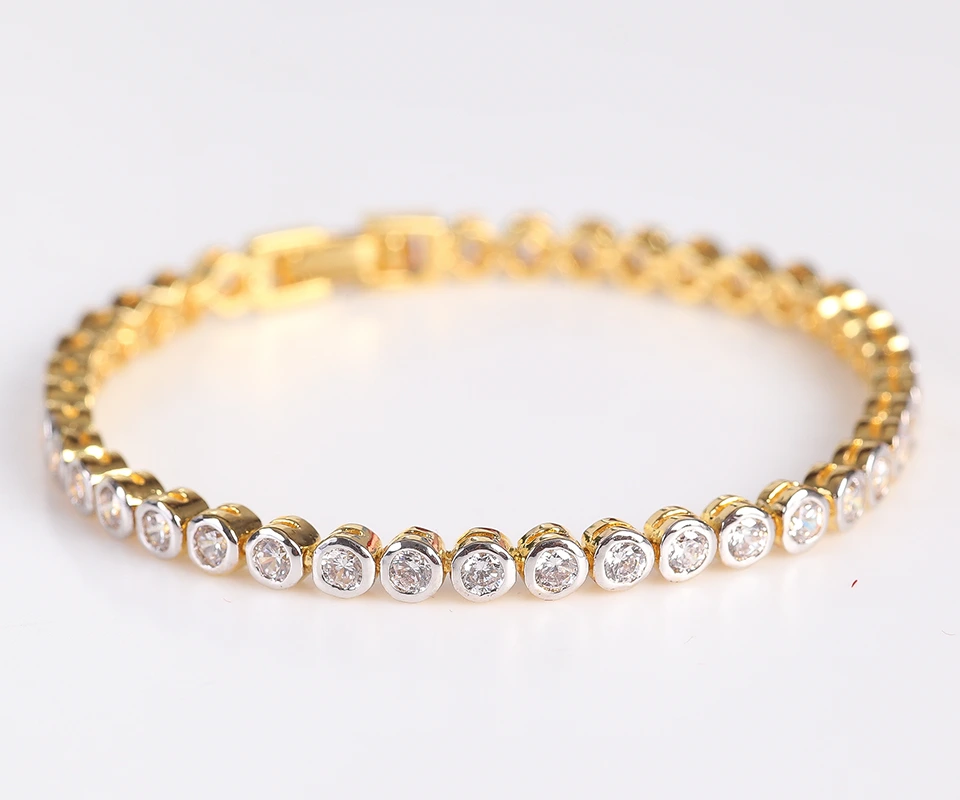
- Prong Setting: The most popular choice for tennis bracelets, the prong setting uses small metal claws to hold each gemstone securely in place. With light entering from multiple angles, including the sides, this classic design allows for maximum light exposure, enhancing the diamond’s brilliance and sparkle.
- Bezel Setting: Offering maximum protection, the bezel setting surrounds a diamond or gemstone with a thin metal rim that can either fully or partially encircle the stone. This secure design makes it an excellent choice for those with active lifestyles, as it holds the stone firmly in place while minimizing the risk of damage or snagging.
- Channel Setting: In this setting, gemstones are secured in a continuous row between two parallel metal strips (or “channels”) without any prongs holding them individually. The stones sit flush with the metal, creating a smooth, snag-free, streamlined surface. The result is a smooth, uninterrupted row of sparkle that creates a clean, sophisticated look. This is often used with round, princess or baguette-cut stones.
Gemstone Selections
Aesthetics and durability are two vital factors when selecting the right gemstones for your tennis bracelet. Each gem offers its own unique beauty, properties and symbolism, allowing you to personalize your bracelet to suit your style or express a deeper meaning.
- Diamonds: Due to their unmatched brilliance, fire and hardness, diamonds are the classic choice for tennis bracelets. They are ideal for jewelry that’s worn frequently.
- Sapphires: Known for their exceptional durability and timeless appeal, sapphires come in a stunning array of colors—from classic blue to pink, padparadscha, yellow, orange and green. Their versatility in style and rich symbolism of wisdom and loyalty make them a meaningful and vibrant alternative to diamonds. Sapphire is September’s birthstone.
- Rubies: Celebrated for their fiery red hue and exceptional hardness, rubies symbolize passion, love and courage. As one of the most valuable and durable gemstones, their vivid color and inner glow—often called “pigeon’s blood” in top-quality stones—make them a striking, enduring choice for fine jewelry. Ruby is July’s birthstone.
- Emeralds: The ultimate green gemstone, emeralds symbolize wealth, serenity and wisdom. Slightly softer and more delicate than sapphires or rubies, they often require extra care—especially if treated with oil or fracture-filled to enhance clarity. Timeless and lush, emerald is also the birthstone for May.
Diamond Cuts
A diamond’s shape and cut style significantly impact its brilliance, pattern and the overall design of a tennis bracelet. Certain cuts enhance light performance, while others offer a sleek, modern look. Here are the most popular diamond cuts featured in tennis bracelets:
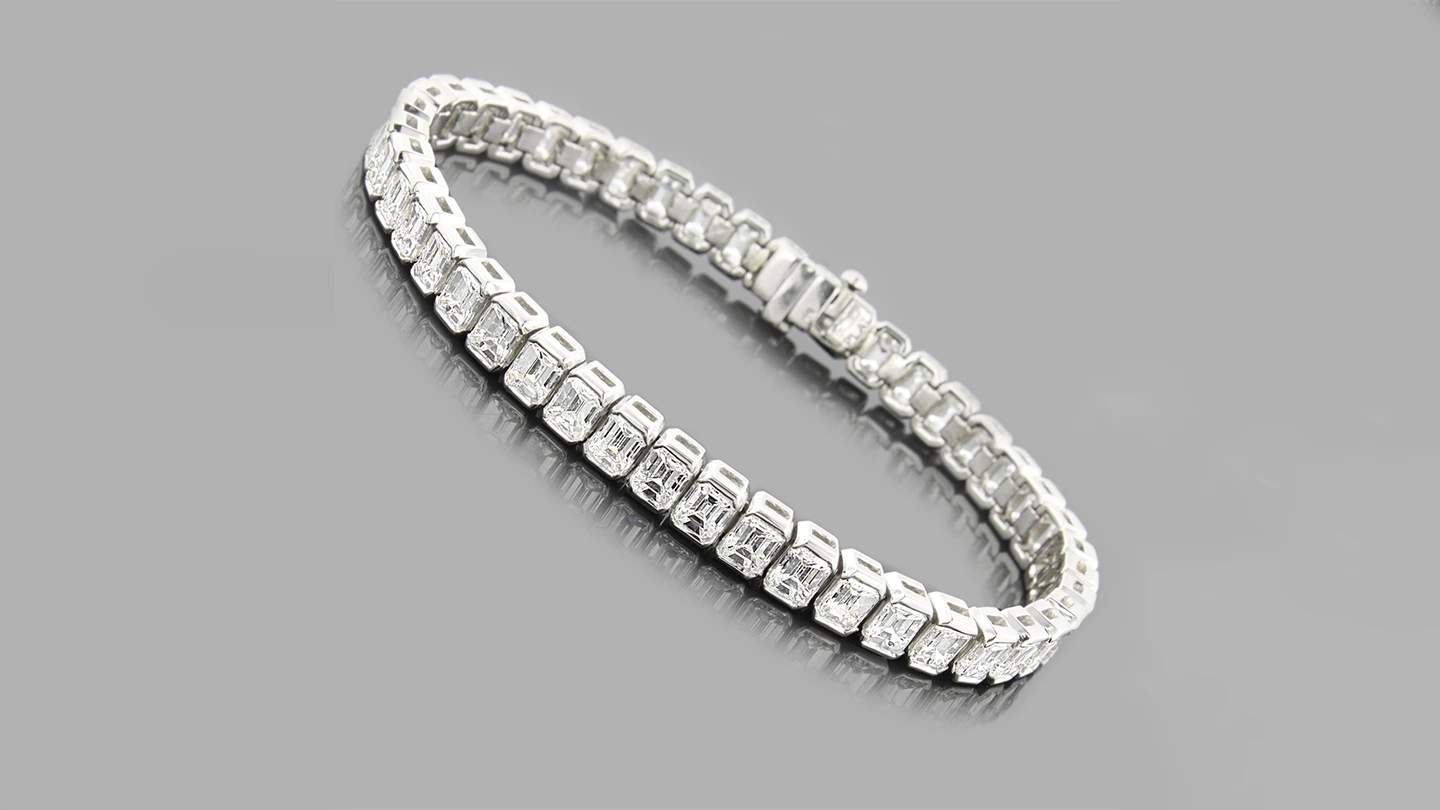
Bold and modern, this luxurious tennis bracelet consists of emerald cut diamonds set in platinum.
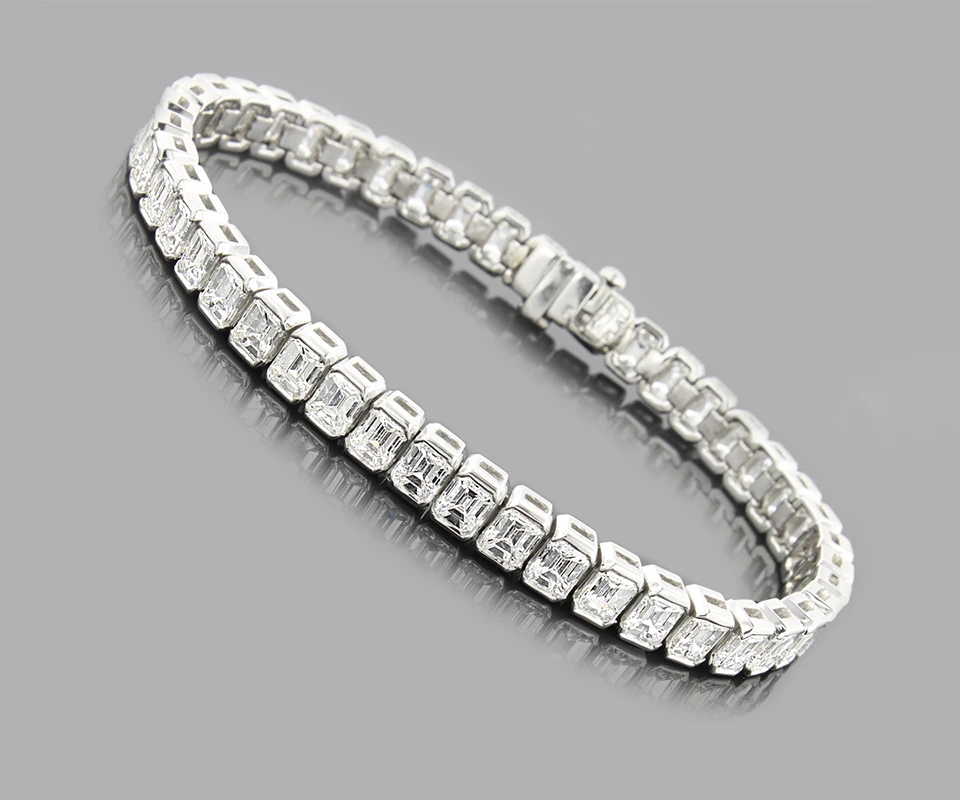
Bold and modern, this luxurious tennis bracelet consists of emerald cut diamonds set in platinum.
- Round Brilliant Cut: The most popular choice for tennis bracelets, the round brilliant cut is renowned for its exceptional ability to reflect light, resulting in maximum brilliance and sparkle. Its perfectly circular shape offers a graceful, classic look in tennis bracelets, creating a continuous flow of dazzling light.
- Princess Cut: Another favored option for tennis bracelets, the princess cut features a modern, square or rectangular shape with sharp, angular corners. It offers a contemporary alternative to the round brilliant, maximizing sparkle while maintaining a clean, geometric alignment that complements the bracelet’s design.
- Emerald Cut: Recognized for its elegant, elongated rectangular shape and distinctive stepped facets, the emerald cut creates a unique optical effect known as the “hall of mirrors.” This cut emphasizes clarity and depth over brilliance, lending a sophisticated and vintage charm to tennis bracelets.
Choice of Metals
The metal you choose for your tennis bracelet defines its look, longevity and comfort. Here are the most popular metal options, each offering unique benefits:
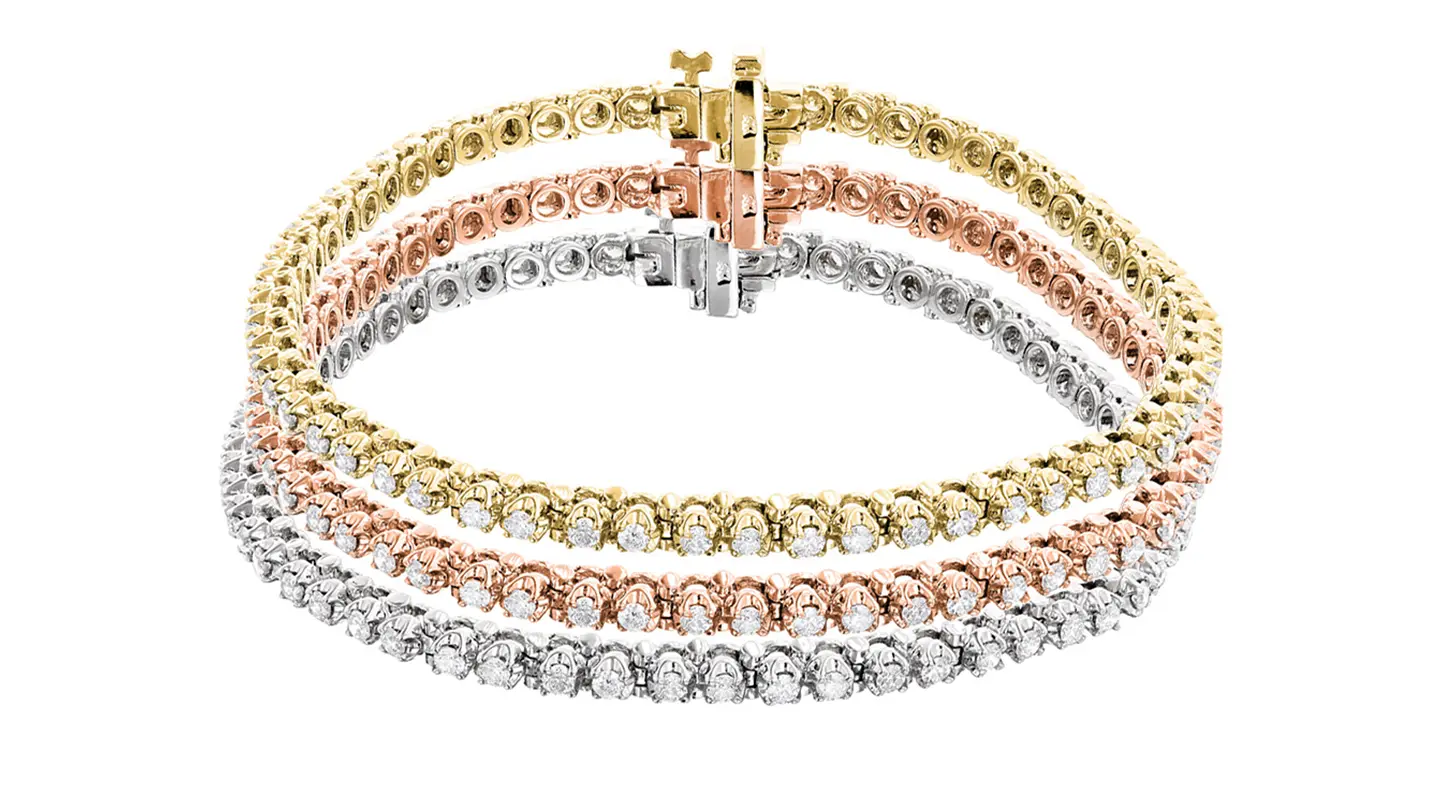
You can stack tennis bracelets and mix and match different metal colors to add versatility and glamor to your style.
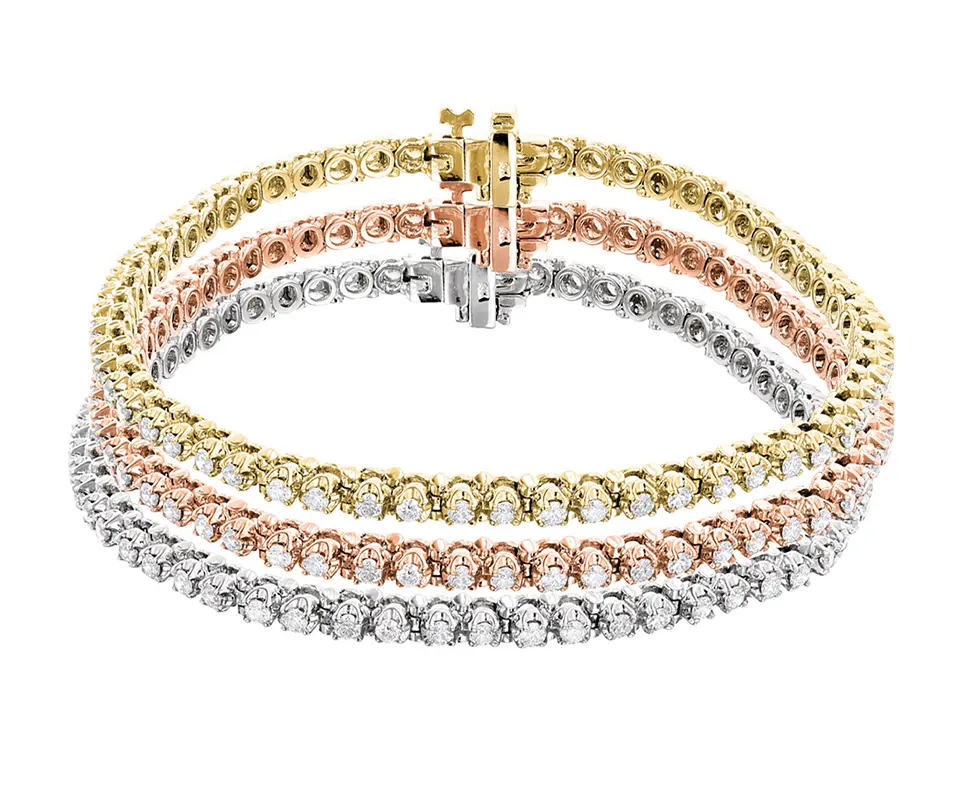
You can stack tennis bracelets and mix and match different metal colors to add versatility and glamor to your style.
- 18K Gold: Available in yellow, white and rose gold, 18K gold is a popular choice for tennis bracelets thanks to its ideal balance of purity and durability. White gold is typically plated with rhodium to achieve its bright, reflective white finish; however, this plating can wear off over time and may require replating every few years to maintain its lustrous appearance.
- Platinum: Renowned for its exceptional strength and naturally hypoallergenic properties, platinum is a premium metal choice for tennis bracelets. Unlike other metals, platinum maintains its color and luster over a lifetime without tarnishing. While platinum is highly durable, it does develop a subtle patina over time—a soft, matte finish that can add character and vintage appeal. This natural aging process can be polished away if desired, restoring the metal’s original bright shine.
- Silver: A more budget-friendly option, silver is softer than other metals and may require regular polishing and care to maintain its shine, or the metal may tarnish with time. However, it offers an affordable entry point into the luxury and elegance of tennis bracelets.
How Much is a Diamond Tennis Bracelet?
The price of a tennis bracelet can vary widely depending on several factors, including total carat weight, the type and quality of the gemstones, and the metal used in the setting.
High-quality tennis bracelets often come with GIA reports, which provide an independent, trusted evaluation of the gems’ characteristics—such as color, clarity, cut and carat weight when it comes to diamonds, and treatment and color when it comes to colored gemstones. These reports offer buyers confidence and transparency regarding the quality and authenticity of both diamonds and colored stones used in the bracelet.
How to Wear a Diamond Tennis Bracelet
A tennis bracelet can add elegance and flair to any outfit. Here are some versatile tips and occasion-specific suggestions to help you make the most of this classic jewelry piece:
General Styling Tips
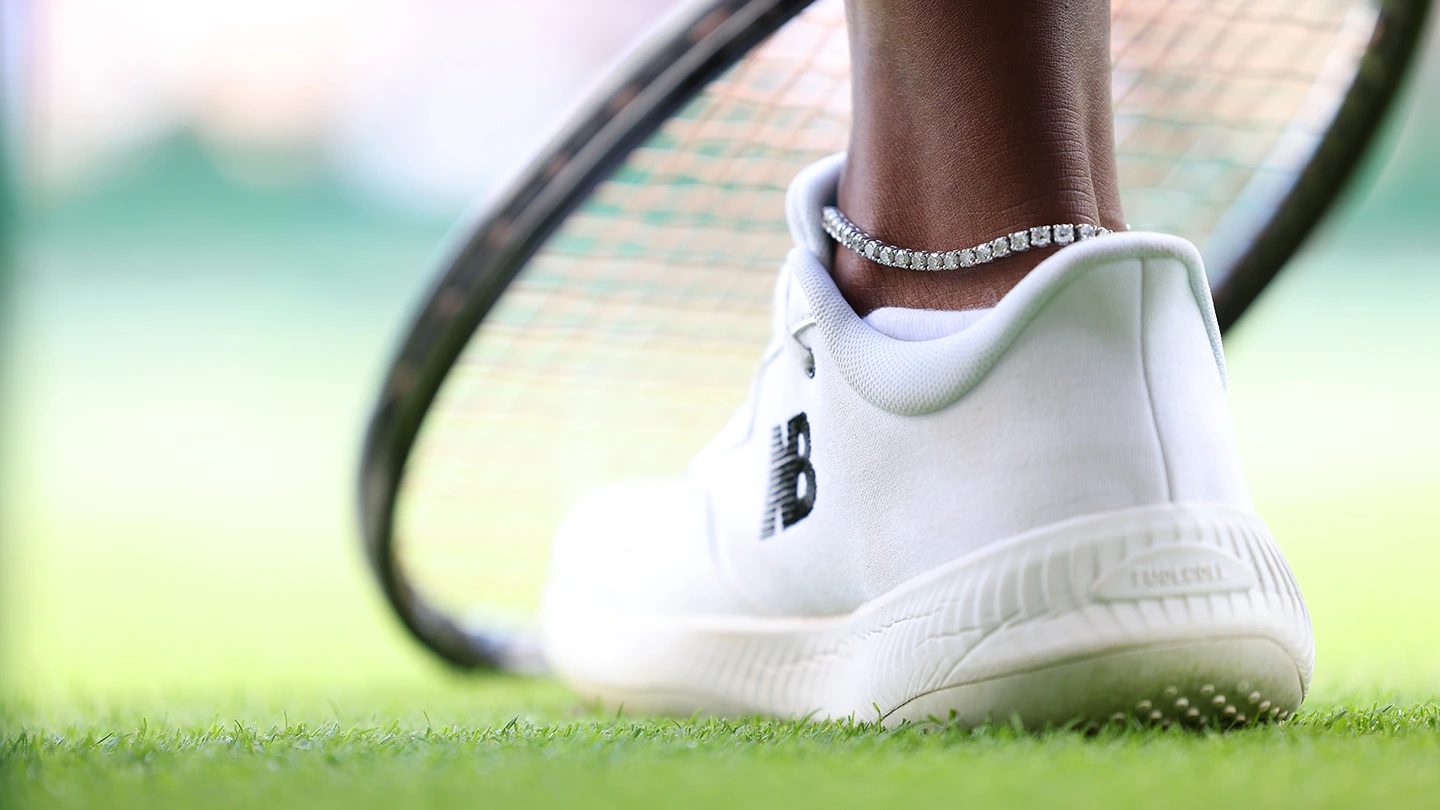
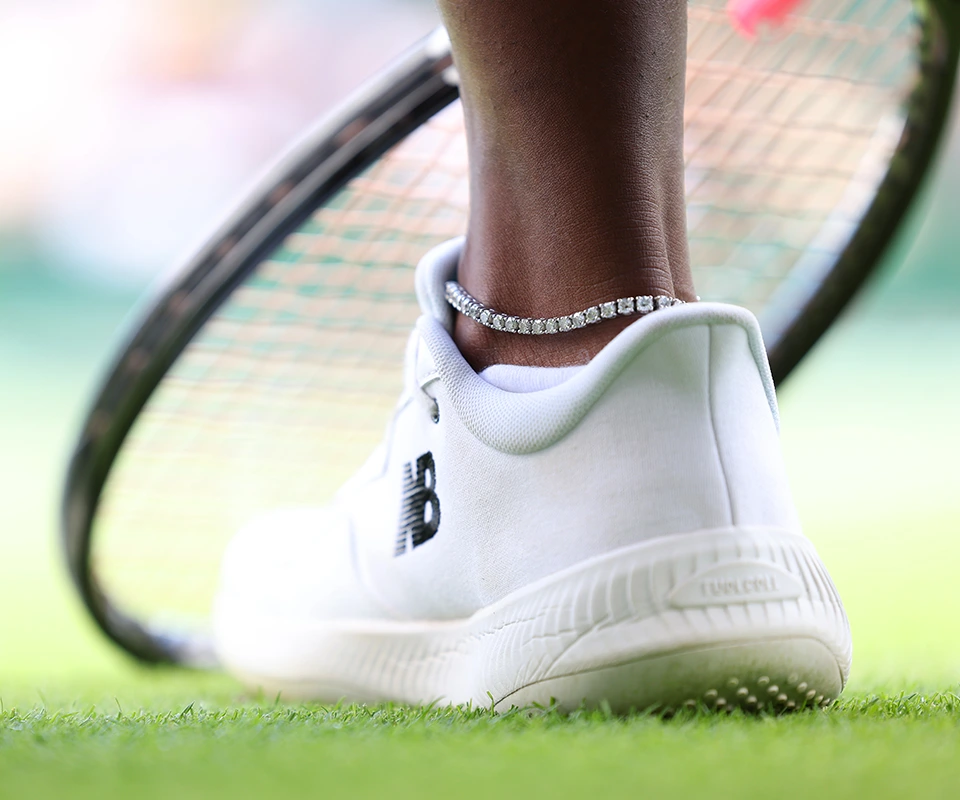
- Mix and Match Metals: Achieve a refined and cohesive look by matching the metal tone of your tennis bracelet with that of your other jewelry pieces. For a more contemporary and fashion-forward approach, don’t hesitate to mix metals—such as pairing yellow gold with white gold or rose gold. This contrast adds depth and visual interest, reflecting modern styling trends embraced by designers and influencers alike.
- Stacking Bracelets: Create a personalized, layered effect by stacking tennis bracelets of different widths, cuts and designs. Combining a delicate, thin tennis bracelet with a chunkier or more textured piece produces a striking contrast that draws attention and adds dimension to your wrist. Layering bracelets is a popular trend that allows for versatility and self-expression.
- Solo Statement: Let a single tennis bracelet serve as the elegant focal point of your look. Its timeless simplicity and understated brilliance make it ideal for both everyday wear and special occasions, offering effortless versatility without overwhelming your style.
- Pair with a Watch: Enhance your wristwear by pairing a tennis bracelet with a watch. The sleek sparkle of the bracelet complements the functional elegance of a watch, elevating your overall look with a touch of luxury. This combination is especially popular in business and formal settings, where subtle sophistication is key.
- Play with Color: Incorporate tennis bracelets featuring colored gemstones—such as sapphires, rubies or emeralds—to inject vibrancy and personality into your outfit. Colored stones can brighten neutral ensembles or complement bold fashion choices, transforming a simple look into a statement with a playful and luxurious twist.
Styling for Every Occasion
- Everyday Wear: A tennis bracelet is the perfect accessory to enhance your daily outfits with a touch of luxury. Choose a slim, understated design that adds sparkle without overpowering your casual wear. This subtle elegance is ideal for a lunch out with friends or a day of running errands.
- At the Office: Maintain a professional yet stylish appearance by wearing a single bold tennis bracelet or one or two delicate tennis bracelets. Its minimalistic sparkle adds a refined touch to your business attire.
- Formal Events: Make a bold statement at galas or dinner parties by stacking multiple tennis bracelets. Layering pieces with different gem types or cuts can add a sophisticated flair to your evening gown, ensuring you capture attention with every gesture.
- Bridal Wear: For your special day, a tennis bracelet can perfectly complement your bridal look. Choose a bracelet that matches the style and metal of your engagement and wedding rings to create a cohesive and stunning bridal ensemble. This elegant addition will add a timeless sparkle as you walk down the aisle.
Tennis Bracelet Styling FAQs
Can You Wear a Diamond Tennis Bracelet Every Day?
Absolutely! Diamond tennis bracelets are crafted for durability and everyday wear. Their secure settings and sturdy materials make them well-suited for daily activities. To ensure your bracelet lasts, opt for styles with reliable clasps and consider protective settings like bezel or channel, which help shield the stones from bumps and scratches. Regular maintenance—including gentle cleaning with dish soap and a soft toothbrush, along with periodic inspections of the settings—will keep your bracelet sparkling brilliantly day after day.
Which Wrist Should You Wear a Tennis Bracelet on?
There’s no strict rule for which wrist to wear a tennis bracelet on—it ultimately comes down to personal preference and comfort. Some people choose their dominant wrist, finding it more natural or comfortable, while others opt for the non-dominant wrist to make fastening the clasp easier and to minimize wear and tear. Consider your daily activities and how much your bracelet might be exposed to potential damage when deciding which wrist is best for you.
How Should a Tennis Bracelet Fit?
A tennis bracelet should fit comfortably and snugly on your wrist. It should be loose enough to allow some movement but not so loose that it slides off the wrist or moves up and down your arm excessively. Ideally, you should be able to fit one finger between your wrist and the bracelet. This space ensures the bracelet has enough room to move slightly but won’t catch on objects or become a bother. Proper fit is crucial for comfort and for preventing the bracelet from getting caught and getting damaged during daily activities.
Choosing GIA-Graded Diamonds for Your Perfect Tennis Bracelet
When purchasing a tennis bracelet, choosing the right diamonds and gemstones is key. Gems that come with GIA grading reports offer confidence and peace of mind. As the creator of the 4Cs (color, clarity, cut and carat weight), GIA established the global standard for diamond quality, and its reports are trusted around the world by collectors, museums and auction houses alike. When your tennis bracelet is backed by a GIA report, you can be confident in the quality and authenticity of your jewelry, ensuring you’ll cherish your bracelet for generations to come.
